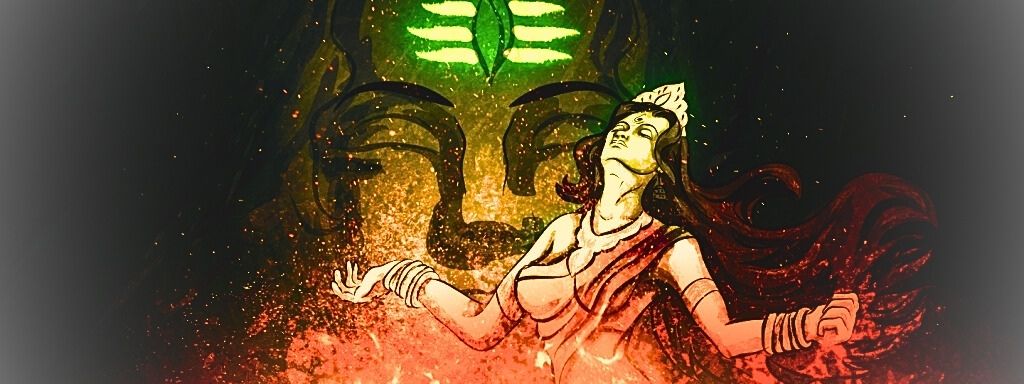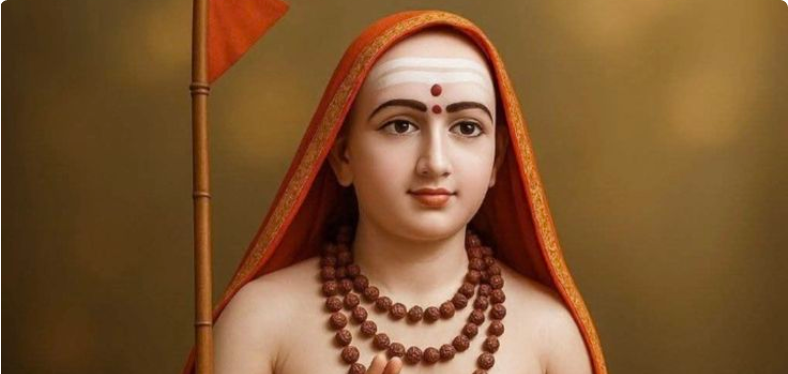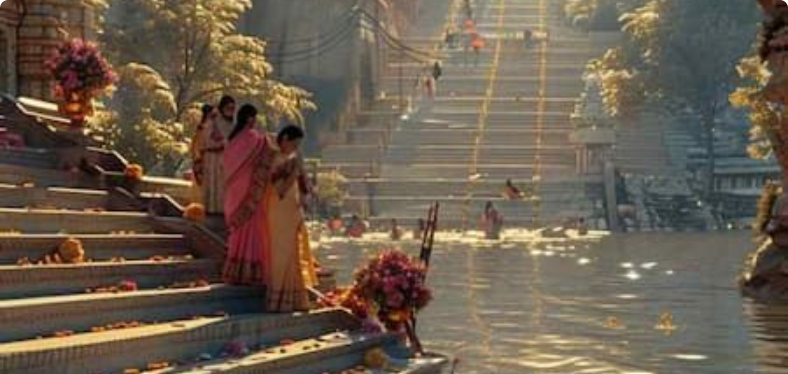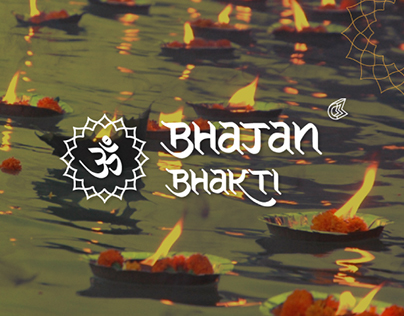
October 13, 2025
Spirituality
9 min read
Shaktipeeths of India: The Sacred Abodes of the Divine Feminine
The Shakti Peeths are among the most powerful and revered pilgrimage sites in Hinduism, symbolizing the eternal presence of Goddess Shakti — the cosmic mother and source of all creation. According to legend, these sacred sites emerged when the body parts of Goddess Sati fell upon the earth as Lord Shiva, in grief, wandered the universe carrying her lifeless form. Each location where a part of her body, ornament, or clothing fell became charged with divine feminine energy — forming what we now know as a Shakti Peeth.
There are believed to be 51 major Shakti Peeths spread across India and beyond, each representing a unique aspect of the Devi and associated with a corresponding Bhairava (form of Shiva). From Kamakhya in Assam, where her womb is believed to have fallen, to Hinglaj in Pakistan, to Kanyakumari at India’s southern tip — every Peeth tells a story of devotion, power, and mysticism. These sacred sites continue to draw millions of devotees seeking blessings, strength, and spiritual awakening through the divine presence of the Mother Goddess.
India’s spiritual landscape is dotted with temples and shrines dedicated to the Goddess, but
among them, the Shaktipeeths (seats of Shakti) hold a special and powerful place. These are
considered the most sacred centers of divine feminine energy, and each one carries a unique
legend, vibration, and significance.
While most people know that there are 51 Shaktipeeths, linked to the story of Goddess Sati and
Lord Shiva, there are layers of hidden history, astronomy, tantric practices, and regional
variations that make the Shaktipeeths far more fascinating than commonly understood.
1. The Legend of Shaktipeeths: Story Shakti and Bhairava
Long ago, King Daksha Prajapati, one of the sons of Lord Brahma, had a daughter named Sati.
From childhood, Sati was deeply devoted to Lord Shiva, the ascetic yogi who lived on Mount
Kailash. Despite Shiva’s unconventional lifestyle, Sati chose him as her husband and married
him against her father’s wishes.
Daksha never approved of Shiva—he considered him uncivilized, a wanderer who lived among
ghosts and ascetics. Though Sati was happy with Shiva, Daksha carried bitterness in his heart.
One day, Daksha organized a grand yajna (fire sacrifice) to display his power and prestige. He
invited all gods, sages, and kings—but deliberately excluded Shiva and Sati.
Sati, however, longed to visit her family and attend the yajna. Ignoring Shiva’s advice, she went
to her father’s palace. There, instead of welcoming her, Daksha insulted Lord Shiva mercilessly
in front of all the guests.
Unable to bear the humiliation of her beloved husband, Sati’s grief turned into fiery anger. She
declared that she could not live in a body born of Daksha and jumped into the sacrificial fire,
ending her life.
When Shiva learned of Sati’s death, he was devastated. Grief and rage consumed him. He
stormed into Daksha’s yajna, destroyed the sacrificial arena, and cut off Daksha’s head. Later,
upon the request of other gods, he restored Daksha’s life but gave him a goat’s head.
Yet Shiva’s sorrow did not end. In unbearable pain, he lifted Sati’s lifeless body on his shoulders
and began to wander across the universe, performing the Tandava—the dance of destruction.
His dance shook the three worlds, threatening to end creation itself.
The gods, terrified that the universe would collapse, prayed to Lord Vishnu for help. Vishnu
realized that Shiva would not calm down until Sati’s body was no longer with him.
So, Vishnu released his Sudarshan Chakra, which cut Sati’s body into pieces. As Shiva roamed,
the pieces of Sati’s body fell across the Indian subcontinent.
Wherever a part of her body or an ornament fell, that place became charged with divine
feminine energy and turned into a Shaktipeeth—a sacred seat of Shakti.
According to different scriptures, the number of Shaktipeeths varies:
51 (most commonly accepted, linked to Sanskrit alphabets/letters)
52, 64, or 108 (mentioned in tantric and puranic texts)
Each Shaktipeeth has two deities:
Shakti (the form of Goddess associated with that body part)
Bhairava (the form of Shiva guarding that place)
This story is not only mythological but also deeply symbolic:
Sati represents Shakti (energy).
Shiva represents consciousness.
When energy is insulted, neglected, or suppressed (as Daksha did), destruction follows.
The scattering of Sati’s body shows how the divine feminine energy pervades every corner of
the land—not limited to one place but present everywhere.
Today, millions of devotees visit Shaktipeeths to honor the Goddess. These temples are not just
places of worship but living power centers where the story of Sati and Shiva continues to inspire
seekers on the path of devotion, strength, and balance of energy.
The Shaktipeeths remind us that wherever the Mother resides, the land becomes sacred.
2. Shaktipeeths Are Not Just in India
While many people associate Shaktipeeths only with India, they are actually spread across the
subcontinent. Some are located in:
Pakistan (Hinglaj Mata, one of the most revered)
Bangladesh (Jessore, Sylhet)
Nepal (Guhyeshwari Temple in Kathmandu)
Sri Lanka (Koneswaram Temple, Trincomalee)
Tibet and Bhutan (considered by tantric texts as hidden Shaktipeeths)
This shows how the worship of the Goddess transcended modern-day borders and was deeply
rooted in the entire cultural geography of ancient Bharat.
3. Each Shaktipeeth Has Two Deities: Shakti and Bhairava
Every Shaktipeeth is not just about the Goddess; it is also paired with a form of Lord Bhairava
(Shiva). Together they represent the complete balance of energy—Shakti and Shiva, feminine
and masculine.
📜 The 51 Shaktipeeths
1. Kamakhya (Assam) – Yoni (womb) fell here. Shakti is Kamakhya Devi, Bhairava is
Umananda.
2. Kalighat (Kolkata, WB) – Right toe. Shakti is Kalika, Bhairava is Nakuleshwar.
3. Tarapith (WB) – Third eye. Shakti is Tara, Bhairava is Chandrashekhar.
4. Jwalamukhi (Himachal Pradesh) – Tongue. Shakti is Siddhida, Bhairava is Unmatta Bhairava.
5. Vaishno Devi (Jammu & Kashmir) – Symbolic seat at Trikuta hill. Shakti is Mahamaya,
Bhairava is Bhairavnath.
6. Hinglaj (Pakistan, Balochistan) – Head. Shakti is Hinglaj Mata, Bhairava is Bhimalochan.
7. Naina Devi (Himachal Pradesh) – Eyes. Shakti is Naina Devi, Bhairava is Ksheerkanth.
8. Manikarnika (Varanasi, UP) – Earrings. Shakti is Vishalakshi, Bhairava is Kala Bhairava.
9. Kanchi Kamakshi (Tamil Nadu) – Navel. Shakti is Kamakshi, Bhairava is Krodhish.
10. Kireet (Jessore, Bangladesh) – Crown. Shakti is Vimla, Bhairava is Sanvart.
11. Kankalitala (WB) – Pelvis. Shakti is Devgarbha, Bhairava is Ruru.
12. Kanyashram (Kanyakumari, TN) – Back. Shakti is Sarvani, Bhairava is Nimish.
13. Vibhash (WB) – Left ankle. Shakti is Kapalini, Bhairava is Shiva.
14. Shriparvat (Telangana) – Right anklet. Shakti is Shrishaila, Bhairava is Mallikarjuna.
15. Ramgiri (Chitrakoot, MP) – Right breast. Shakti is Shivani, Bhairava is Chanda.
16. Ujjain (MP, Harsiddhi) – Elbow. Shakti is Avanti, Bhairava is Lambkarna.
17. Lankeshwari (Sri Lanka, Trincomalee) – Feet. Shakti is Indrakshi, Bhairava is Ruru.
18. Guhyeshwari (Kathmandu, Nepal) – Hips. Shakti is Mahashira, Bhairava is Kapali.
19. Chattal (Sylhet, Bangladesh) – Right arm. Shakti is Mahalakshmi, Bhairava is
Sambaranand.
20. Karveer (Kolhapur, Maharashtra) – Eyes. Shakti is Mahalakshmi, Bhairava is Krodhish.
21. Prayag (Allahabad, UP) – Fingers. Shakti is Lalita, Bhairava is Bhairava.
22. Jalandhar (Punjab) – Left breast. Shakti is Tripurmalini, Bhairava is Bhishan.
23. Ratnavali (Khanakul, WB) – Right shoulder. Shakti is Kumari, Bhairava is Shiva.
24. Bakreshwar (WB) – Portion between eyebrows. Shakti is Mahishmardini, Bhairava is
Vakranath.
25. Kurukshetra (Haryana) – Right ankle. Shakti is Savitri, Bhairava is Sthanu.
26. Bhairavparvat (MP) – Left elbow. Shakti is Avanti, Bhairava is Lambkarna.
27. Trisrota (Dinajpur, WB) – Left toe. Shakti is Bhramari, Bhairava is Ambarish.
28. Vaidyanath (Deoghar, Jharkhand) – Heart. Shakti is Jaya Durga, Bhairava is Vaidyanath.
29. Janakpur (Nepal) – Chin. Shakti is Girija, Bhairava is Mahodar.
30. Attahas (Birbhum, WB) – Lips. Shakti is Fullara, Bhairava is Vishvesh.
31. Sainthia/Nandipur (WB) – Necklace. Shakti is Nandini, Bhairava is Nandikeshwar.
32. Chhinnamasta (Bihar) – Feet. Shakti is Chhinnamasta, Bhairava is Chand.
33. Ambaji (Gujarat) – Heart. Shakti is Ambika, Bhairava is Batuk.
34. Kamgiri (Assam) – Groin. Shakti is Kamteshwari, Bhairava is Uddanda.
35. Sugandha (Bangladesh, Barisal) – Nose. Shakti is Sunanda, Bhairava is Trayambak.
36. Pashupatinath (Nepal) – Left cheek. Shakti is Mahashira, Bhairava is Kapali.
37. Bahula (Burdwan, WB) – Left arm. Shakti is Bahula, Bhairava is Bhiruk.
38. Jajpur (Odisha) – Navel. Shakti is Biraja, Bhairava is Jagannath.
39. Utkala (Odisha) – Feet. Shakti is Vimala, Bhairava is Jagannath.
40. Shrishailam (Andhra Pradesh) – Neck. Shakti is Jogulamba, Bhairava is Mallikarjuna.
41. Rudreshwar (Gujarat) – Tongue. Shakti is Rudrani, Bhairava is Rudra.
42. Shringverpur (UP) – Nose ring. Shakti is Lalita, Bhairava is Kshtrapaal.
43. Karnat (WB) – Ears. Shakti is Jayanti, Bhairava is Krodhish.
44. Nandikeshwari (WB, Sainthia) – Necklace. Shakti is Nandini, Bhairava is Nandikeshwar.
45. Sharvani (Nepal) – Right knee. Shakti is Mahashira, Bhairava is Raktaksha.
46. Godavari (AP) – Left cheek. Shakti is Vishweshwari, Bhairava is Dandapani.
47. Mithila (Darbhanga, Bihar) – Left shoulder. Shakti is Uma, Bhairava is Mahodar.
48. Ratnavali (Bengal) – Right shoulder. Shakti is Kumari, Bhairava is Shiva.
49. Panchsagar (Bihar) – Teeth. Shakti is Barahi, Bhairava is Vaidyanath.
50. Manasa (Tibet) – Hand. Shakti is Dakshayani, Bhairava is Amar.
51. Lalita Peeth (Prayagraj, UP) – Fingers. Shakti is Lalita, Bhairava is Bhairava.
4. The Astronomical and Geographical Mystery
Some researchers believe that the Shaktipeeths are not randomly scattered, but form a
geometric grid across the Indian subcontinent. Many are aligned with ancient trade routes,
rivers, and even magnetic energy lines. For instance, Kamakhya in Assam is considered the
yoni (womb) center of the earth’s energy—a cosmic powerhouse linked to fertility and creation.
5. Shaktipeeths and the Tantric Connection
Many Shaktipeeths—especially Kamakhya (Assam), Tarapith (West Bengal), and Hinglaj
(Pakistan)—are important centers of tantra. During Navratri and Ashadha Gupt Navratri, secret
rituals are performed here, often not open to the public.
At Kamakhya, the Ambubachi Mela celebrates the Goddess’s annual menstruation, symbolizing
fertility of the earth.
At Tarapith, cremation ground rituals take place, representing the Goddess in her most fierce
form.
6. The Unique Body Parts of Sati at Different Sites
Each Shaktipeeth is associated with a specific part of Sati’s body or ornament. Some
uncommon examples:
Hinglaj Mata (Pakistan) → Head
Kamakhya (Assam) → Yoni (womb)
Kalighat (Kolkata) → Toes of the right foot
Jwala Ji (Himachal) → Tongue (manifested as eternal flames)
Interestingly, some Peeths are associated not with physical body parts but with ornaments or
clothing of Sati.
7. Lesser-Known Shaktipeeths Many Haven’t Heard Of
While Kamakhya, Kalighat, and Vaishno Devi are famous, some little-known Shaktipeeths
include:
Kireet Shaktipeeth (Bangladesh) → Crown of Sati fell here
Sharvani Shaktipeeth (Nepal) → Right knee
Manasa Shaktipeeth (Tibet) → Hand
Chattal Shaktipeeth (Bangladesh) → Right arm
These are rarely visited due to their remote locations, but they hold great spiritual power.
8. Festivals at Shaktipeeths
Each Shaktipeeth has its own unique style of Navratri or Durga Puja. For example:
Kamakhya → Ambubachi Mela instead of traditional Durga Puja
Kalighat → Fierce worship of Kali during Kali Puja
Jwala Ji → Eternal flame worship during Navratri
Vaishno Devi → Chaitra and Sharad Navratri yatras
9. Shaktipeeths as Energy Centers
Many yogis believe that Shaktipeeths are not just symbolic shrines, but energetic powerhouses
connected to chakras of the earth. Worship here is said to help in awakening the kundalini and
attaining spiritual progress faster than elsewhere.
10. The Living Tradition
Even today, Shaktipeeths are not just historical monuments. They are living centers of faith,
where millions of devotees still experience visions, miracles, and blessings. They also preserve
India’s diverse cultural heritage—from folk songs and dances to ancient temple architecture.
Conclusion
The Shaktipeeths are far more than a collection of temples; they are cosmic landmarks that map
the presence of the Divine Mother across the subcontinent. Each one tells a story, carries a
unique energy, and continues to guide seekers even in modern times.
Next time you hear about Shaktipeeths, remember—they are not just places of worship, but
gateways to the mysteries of Shakti, Tantra, and the ancient wisdom of India.
among them, the Shaktipeeths (seats of Shakti) hold a special and powerful place. These are
considered the most sacred centers of divine feminine energy, and each one carries a unique
legend, vibration, and significance.
While most people know that there are 51 Shaktipeeths, linked to the story of Goddess Sati and
Lord Shiva, there are layers of hidden history, astronomy, tantric practices, and regional
variations that make the Shaktipeeths far more fascinating than commonly understood.
1. The Legend of Shaktipeeths: Story Shakti and Bhairava
Long ago, King Daksha Prajapati, one of the sons of Lord Brahma, had a daughter named Sati.
From childhood, Sati was deeply devoted to Lord Shiva, the ascetic yogi who lived on Mount
Kailash. Despite Shiva’s unconventional lifestyle, Sati chose him as her husband and married
him against her father’s wishes.
Daksha never approved of Shiva—he considered him uncivilized, a wanderer who lived among
ghosts and ascetics. Though Sati was happy with Shiva, Daksha carried bitterness in his heart.
One day, Daksha organized a grand yajna (fire sacrifice) to display his power and prestige. He
invited all gods, sages, and kings—but deliberately excluded Shiva and Sati.
Sati, however, longed to visit her family and attend the yajna. Ignoring Shiva’s advice, she went
to her father’s palace. There, instead of welcoming her, Daksha insulted Lord Shiva mercilessly
in front of all the guests.
Unable to bear the humiliation of her beloved husband, Sati’s grief turned into fiery anger. She
declared that she could not live in a body born of Daksha and jumped into the sacrificial fire,
ending her life.
When Shiva learned of Sati’s death, he was devastated. Grief and rage consumed him. He
stormed into Daksha’s yajna, destroyed the sacrificial arena, and cut off Daksha’s head. Later,
upon the request of other gods, he restored Daksha’s life but gave him a goat’s head.
Yet Shiva’s sorrow did not end. In unbearable pain, he lifted Sati’s lifeless body on his shoulders
and began to wander across the universe, performing the Tandava—the dance of destruction.
His dance shook the three worlds, threatening to end creation itself.
The gods, terrified that the universe would collapse, prayed to Lord Vishnu for help. Vishnu
realized that Shiva would not calm down until Sati’s body was no longer with him.
So, Vishnu released his Sudarshan Chakra, which cut Sati’s body into pieces. As Shiva roamed,
the pieces of Sati’s body fell across the Indian subcontinent.
Wherever a part of her body or an ornament fell, that place became charged with divine
feminine energy and turned into a Shaktipeeth—a sacred seat of Shakti.
According to different scriptures, the number of Shaktipeeths varies:
51 (most commonly accepted, linked to Sanskrit alphabets/letters)
52, 64, or 108 (mentioned in tantric and puranic texts)
Each Shaktipeeth has two deities:
Shakti (the form of Goddess associated with that body part)
Bhairava (the form of Shiva guarding that place)
This story is not only mythological but also deeply symbolic:
Sati represents Shakti (energy).
Shiva represents consciousness.
When energy is insulted, neglected, or suppressed (as Daksha did), destruction follows.
The scattering of Sati’s body shows how the divine feminine energy pervades every corner of
the land—not limited to one place but present everywhere.
Today, millions of devotees visit Shaktipeeths to honor the Goddess. These temples are not just
places of worship but living power centers where the story of Sati and Shiva continues to inspire
seekers on the path of devotion, strength, and balance of energy.
The Shaktipeeths remind us that wherever the Mother resides, the land becomes sacred.
2. Shaktipeeths Are Not Just in India
While many people associate Shaktipeeths only with India, they are actually spread across the
subcontinent. Some are located in:
Pakistan (Hinglaj Mata, one of the most revered)
Bangladesh (Jessore, Sylhet)
Nepal (Guhyeshwari Temple in Kathmandu)
Sri Lanka (Koneswaram Temple, Trincomalee)
Tibet and Bhutan (considered by tantric texts as hidden Shaktipeeths)
This shows how the worship of the Goddess transcended modern-day borders and was deeply
rooted in the entire cultural geography of ancient Bharat.
3. Each Shaktipeeth Has Two Deities: Shakti and Bhairava
Every Shaktipeeth is not just about the Goddess; it is also paired with a form of Lord Bhairava
(Shiva). Together they represent the complete balance of energy—Shakti and Shiva, feminine
and masculine.
📜 The 51 Shaktipeeths
1. Kamakhya (Assam) – Yoni (womb) fell here. Shakti is Kamakhya Devi, Bhairava is
Umananda.
2. Kalighat (Kolkata, WB) – Right toe. Shakti is Kalika, Bhairava is Nakuleshwar.
3. Tarapith (WB) – Third eye. Shakti is Tara, Bhairava is Chandrashekhar.
4. Jwalamukhi (Himachal Pradesh) – Tongue. Shakti is Siddhida, Bhairava is Unmatta Bhairava.
5. Vaishno Devi (Jammu & Kashmir) – Symbolic seat at Trikuta hill. Shakti is Mahamaya,
Bhairava is Bhairavnath.
6. Hinglaj (Pakistan, Balochistan) – Head. Shakti is Hinglaj Mata, Bhairava is Bhimalochan.
7. Naina Devi (Himachal Pradesh) – Eyes. Shakti is Naina Devi, Bhairava is Ksheerkanth.
8. Manikarnika (Varanasi, UP) – Earrings. Shakti is Vishalakshi, Bhairava is Kala Bhairava.
9. Kanchi Kamakshi (Tamil Nadu) – Navel. Shakti is Kamakshi, Bhairava is Krodhish.
10. Kireet (Jessore, Bangladesh) – Crown. Shakti is Vimla, Bhairava is Sanvart.
11. Kankalitala (WB) – Pelvis. Shakti is Devgarbha, Bhairava is Ruru.
12. Kanyashram (Kanyakumari, TN) – Back. Shakti is Sarvani, Bhairava is Nimish.
13. Vibhash (WB) – Left ankle. Shakti is Kapalini, Bhairava is Shiva.
14. Shriparvat (Telangana) – Right anklet. Shakti is Shrishaila, Bhairava is Mallikarjuna.
15. Ramgiri (Chitrakoot, MP) – Right breast. Shakti is Shivani, Bhairava is Chanda.
16. Ujjain (MP, Harsiddhi) – Elbow. Shakti is Avanti, Bhairava is Lambkarna.
17. Lankeshwari (Sri Lanka, Trincomalee) – Feet. Shakti is Indrakshi, Bhairava is Ruru.
18. Guhyeshwari (Kathmandu, Nepal) – Hips. Shakti is Mahashira, Bhairava is Kapali.
19. Chattal (Sylhet, Bangladesh) – Right arm. Shakti is Mahalakshmi, Bhairava is
Sambaranand.
20. Karveer (Kolhapur, Maharashtra) – Eyes. Shakti is Mahalakshmi, Bhairava is Krodhish.
21. Prayag (Allahabad, UP) – Fingers. Shakti is Lalita, Bhairava is Bhairava.
22. Jalandhar (Punjab) – Left breast. Shakti is Tripurmalini, Bhairava is Bhishan.
23. Ratnavali (Khanakul, WB) – Right shoulder. Shakti is Kumari, Bhairava is Shiva.
24. Bakreshwar (WB) – Portion between eyebrows. Shakti is Mahishmardini, Bhairava is
Vakranath.
25. Kurukshetra (Haryana) – Right ankle. Shakti is Savitri, Bhairava is Sthanu.
26. Bhairavparvat (MP) – Left elbow. Shakti is Avanti, Bhairava is Lambkarna.
27. Trisrota (Dinajpur, WB) – Left toe. Shakti is Bhramari, Bhairava is Ambarish.
28. Vaidyanath (Deoghar, Jharkhand) – Heart. Shakti is Jaya Durga, Bhairava is Vaidyanath.
29. Janakpur (Nepal) – Chin. Shakti is Girija, Bhairava is Mahodar.
30. Attahas (Birbhum, WB) – Lips. Shakti is Fullara, Bhairava is Vishvesh.
31. Sainthia/Nandipur (WB) – Necklace. Shakti is Nandini, Bhairava is Nandikeshwar.
32. Chhinnamasta (Bihar) – Feet. Shakti is Chhinnamasta, Bhairava is Chand.
33. Ambaji (Gujarat) – Heart. Shakti is Ambika, Bhairava is Batuk.
34. Kamgiri (Assam) – Groin. Shakti is Kamteshwari, Bhairava is Uddanda.
35. Sugandha (Bangladesh, Barisal) – Nose. Shakti is Sunanda, Bhairava is Trayambak.
36. Pashupatinath (Nepal) – Left cheek. Shakti is Mahashira, Bhairava is Kapali.
37. Bahula (Burdwan, WB) – Left arm. Shakti is Bahula, Bhairava is Bhiruk.
38. Jajpur (Odisha) – Navel. Shakti is Biraja, Bhairava is Jagannath.
39. Utkala (Odisha) – Feet. Shakti is Vimala, Bhairava is Jagannath.
40. Shrishailam (Andhra Pradesh) – Neck. Shakti is Jogulamba, Bhairava is Mallikarjuna.
41. Rudreshwar (Gujarat) – Tongue. Shakti is Rudrani, Bhairava is Rudra.
42. Shringverpur (UP) – Nose ring. Shakti is Lalita, Bhairava is Kshtrapaal.
43. Karnat (WB) – Ears. Shakti is Jayanti, Bhairava is Krodhish.
44. Nandikeshwari (WB, Sainthia) – Necklace. Shakti is Nandini, Bhairava is Nandikeshwar.
45. Sharvani (Nepal) – Right knee. Shakti is Mahashira, Bhairava is Raktaksha.
46. Godavari (AP) – Left cheek. Shakti is Vishweshwari, Bhairava is Dandapani.
47. Mithila (Darbhanga, Bihar) – Left shoulder. Shakti is Uma, Bhairava is Mahodar.
48. Ratnavali (Bengal) – Right shoulder. Shakti is Kumari, Bhairava is Shiva.
49. Panchsagar (Bihar) – Teeth. Shakti is Barahi, Bhairava is Vaidyanath.
50. Manasa (Tibet) – Hand. Shakti is Dakshayani, Bhairava is Amar.
51. Lalita Peeth (Prayagraj, UP) – Fingers. Shakti is Lalita, Bhairava is Bhairava.
4. The Astronomical and Geographical Mystery
Some researchers believe that the Shaktipeeths are not randomly scattered, but form a
geometric grid across the Indian subcontinent. Many are aligned with ancient trade routes,
rivers, and even magnetic energy lines. For instance, Kamakhya in Assam is considered the
yoni (womb) center of the earth’s energy—a cosmic powerhouse linked to fertility and creation.
5. Shaktipeeths and the Tantric Connection
Many Shaktipeeths—especially Kamakhya (Assam), Tarapith (West Bengal), and Hinglaj
(Pakistan)—are important centers of tantra. During Navratri and Ashadha Gupt Navratri, secret
rituals are performed here, often not open to the public.
At Kamakhya, the Ambubachi Mela celebrates the Goddess’s annual menstruation, symbolizing
fertility of the earth.
At Tarapith, cremation ground rituals take place, representing the Goddess in her most fierce
form.
6. The Unique Body Parts of Sati at Different Sites
Each Shaktipeeth is associated with a specific part of Sati’s body or ornament. Some
uncommon examples:
Hinglaj Mata (Pakistan) → Head
Kamakhya (Assam) → Yoni (womb)
Kalighat (Kolkata) → Toes of the right foot
Jwala Ji (Himachal) → Tongue (manifested as eternal flames)
Interestingly, some Peeths are associated not with physical body parts but with ornaments or
clothing of Sati.
7. Lesser-Known Shaktipeeths Many Haven’t Heard Of
While Kamakhya, Kalighat, and Vaishno Devi are famous, some little-known Shaktipeeths
include:
Kireet Shaktipeeth (Bangladesh) → Crown of Sati fell here
Sharvani Shaktipeeth (Nepal) → Right knee
Manasa Shaktipeeth (Tibet) → Hand
Chattal Shaktipeeth (Bangladesh) → Right arm
These are rarely visited due to their remote locations, but they hold great spiritual power.
8. Festivals at Shaktipeeths
Each Shaktipeeth has its own unique style of Navratri or Durga Puja. For example:
Kamakhya → Ambubachi Mela instead of traditional Durga Puja
Kalighat → Fierce worship of Kali during Kali Puja
Jwala Ji → Eternal flame worship during Navratri
Vaishno Devi → Chaitra and Sharad Navratri yatras
9. Shaktipeeths as Energy Centers
Many yogis believe that Shaktipeeths are not just symbolic shrines, but energetic powerhouses
connected to chakras of the earth. Worship here is said to help in awakening the kundalini and
attaining spiritual progress faster than elsewhere.
10. The Living Tradition
Even today, Shaktipeeths are not just historical monuments. They are living centers of faith,
where millions of devotees still experience visions, miracles, and blessings. They also preserve
India’s diverse cultural heritage—from folk songs and dances to ancient temple architecture.
Conclusion
The Shaktipeeths are far more than a collection of temples; they are cosmic landmarks that map
the presence of the Divine Mother across the subcontinent. Each one tells a story, carries a
unique energy, and continues to guide seekers even in modern times.
Next time you hear about Shaktipeeths, remember—they are not just places of worship, but
gateways to the mysteries of Shakti, Tantra, and the ancient wisdom of India.


